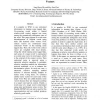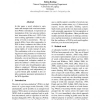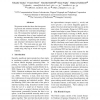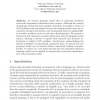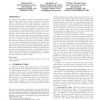108 search results - page 5 / 22 » Latent Semantic Word Sense Induction and Disambiguation |
COLING
2002
13 years 7 months ago
2002
It is popular in WSD to use contextual information in training sense tagged data. Co-occurring words within a limited window-sized context support one sense among the semantically...
EACL
2006
ACL Anthology
13 years 8 months ago
2006
ACL Anthology
In this paper a novel solution to automatic and unsupervised word sense induction (WSI) is introduced. It represents an instantiation of the `one sense per collocation' obser...
EMNLP
2007
13 years 8 months ago
2007
We present results that show that incorporating lexical and structural semantic information is effective for word sense disambiguation. We evaluated the method by using precise in...
CICLING
2008
Springer
13 years 9 months ago
2008
Springer
An N-gram language model aims at capturing statistical word order dependency information from corpora. Although the concept of language models has been applied extensively to handl...
CIVR
2009
Springer
14 years 2 months ago
2009
Springer
To support more effective searches in large-scale weaklytagged image collections, we have developed a novel algorithm to integrate both the visual similarity contexts between the...
